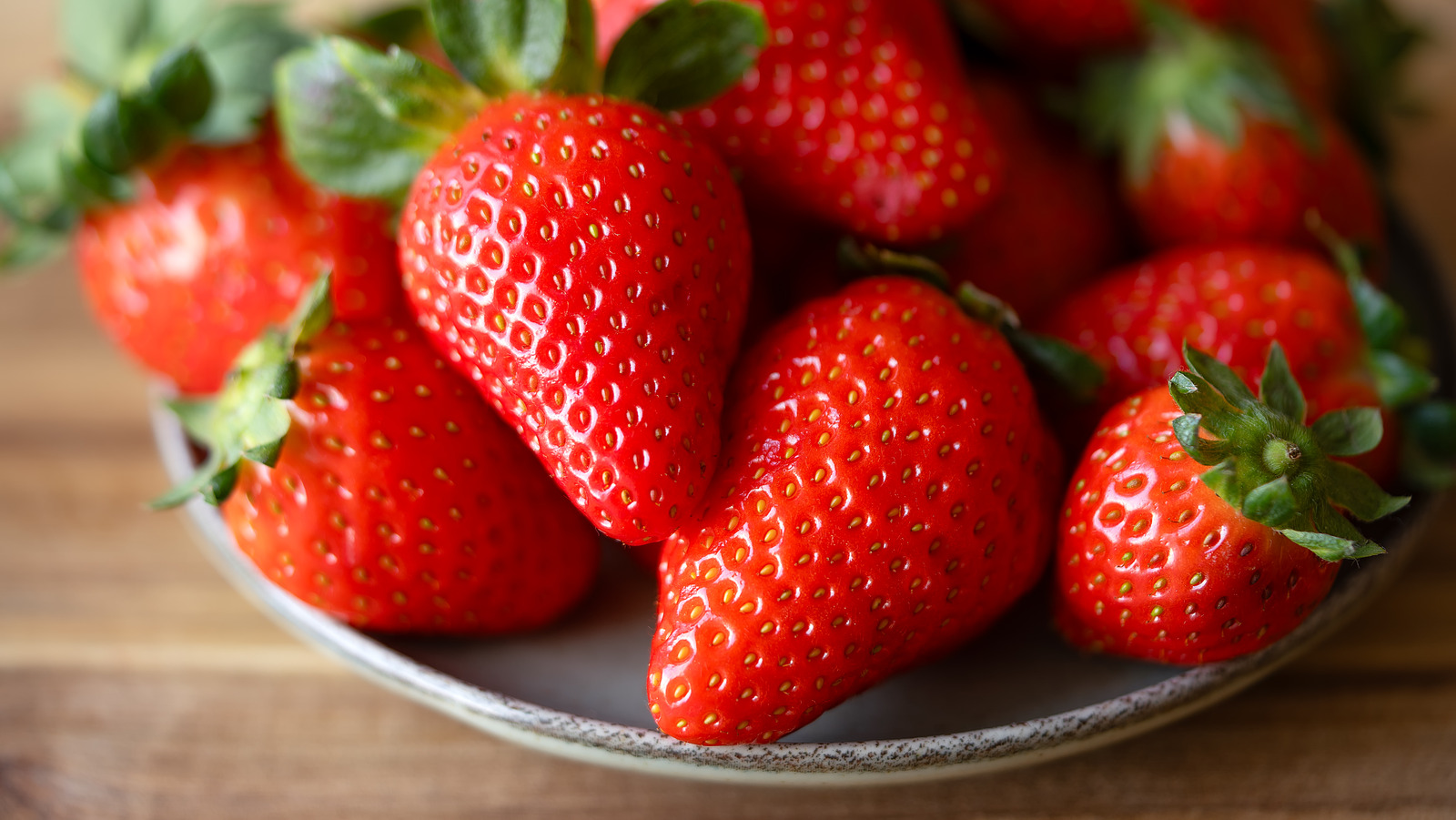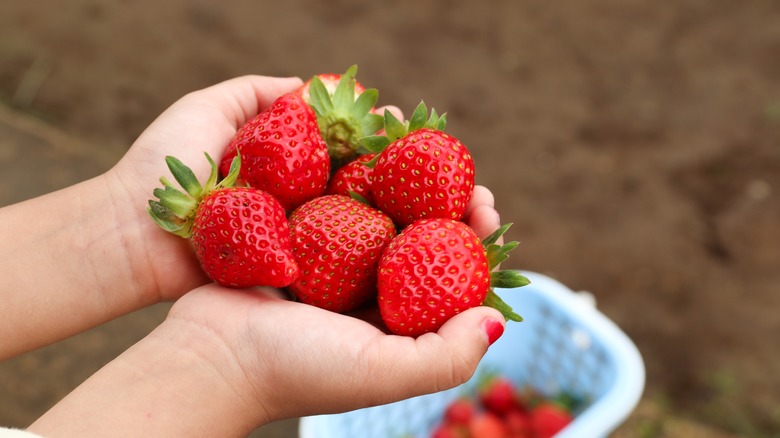Strawberry season is upon us, and that means fridges across the U.S. will soon be overflowing with them in preparation for making everything from glossy strawberry tarts to roasted strawberry and basil lemonade. That is, of course, provided they stay fresh for that long. More than almost any other fruit, strawberries have a reputation for being fresh and succulent one minute and shriveled and moldy the next. If you’re looking for ways to increase this tasty little fruit’s longevity, look no further than the almighty Mason jar.
Any Millennial who leaned into the Mason jar craze of the mid-2010s will be unsurprised to learn that they’re one of the best ways for keeping delicate produce (like strawberries) fresh much longer than the flimsy plastic clamshells from the grocery store. The reason is that Mason jars help provide a stable climate for the strawberries, with no openings for bacteria or moisture to wriggle through. Mason jars are also non-porous, and — provided they’re squeaky clean — unlikely to harbor microbes or fungus that will spoil your strawberries.
Though some claim that this storage method can keep your berries fresh for weeks, the reality is that they’ll likely remain plump and juicy for about 10 days, depending on how fresh they were when you put them in the jar. You can help ensure this timeframe by making sure your berries are bone dry when they go into the jar, and storing them in a nice, cold area of your fridge (think shelf, not door).
Guidelines for mastering the Mason jar method
Though a Mason jar’s non-porous interior is a key factor in keeping your strawberries fresh, it can also lead to even faster spoilage if you store them improperly. First and foremost, your berries should be both clean and dry before you put them in your Mason jar. There are a handful of simple, effective ways to wash your strawberries, including giving them a rinse in vinegar or baking soda to eliminate any microbes or fungus that might be lying in wait on their surface. Once clean, however, it’s crucial that your strawberries are bone dry before storing them.
Since there’s nowhere for moisture to go, putting wet berries in a glass jar will only result in condensation collecting on the inside of the glass, causing your strawberries to get mushy very quickly. After draining them, lay them out on a thick layer of paper towels, patting the exposed areas dry. Change out the paper towels after a few minutes, giving each berry another pat down before gently placing them in your jar.
Like other spring fruits, strawberries are a bit delicate, it’s best not to overcrowd them. Don’t press down on them or force more berries into the jar once it’s full — the key is to avoid smushing them. If you do smush a few, just set them aside. After the rest of your berries are safely stored, you can use the damaged ones to make a delicious strawberry syrup for homemade soda.






